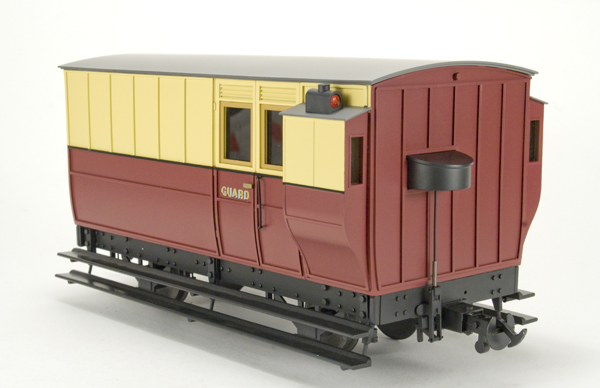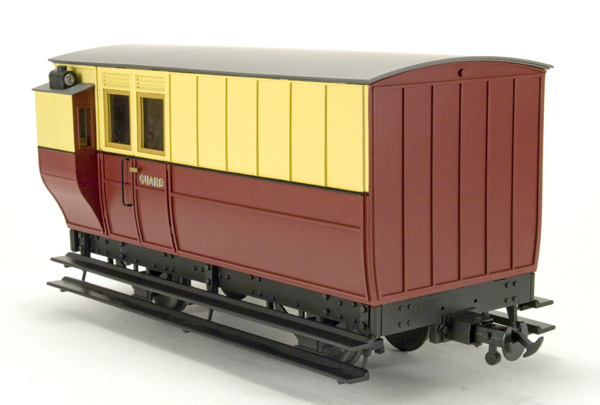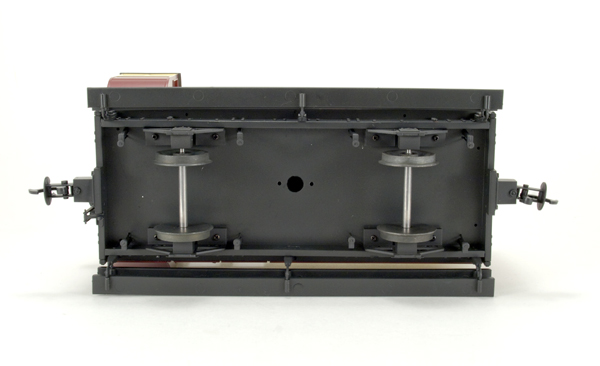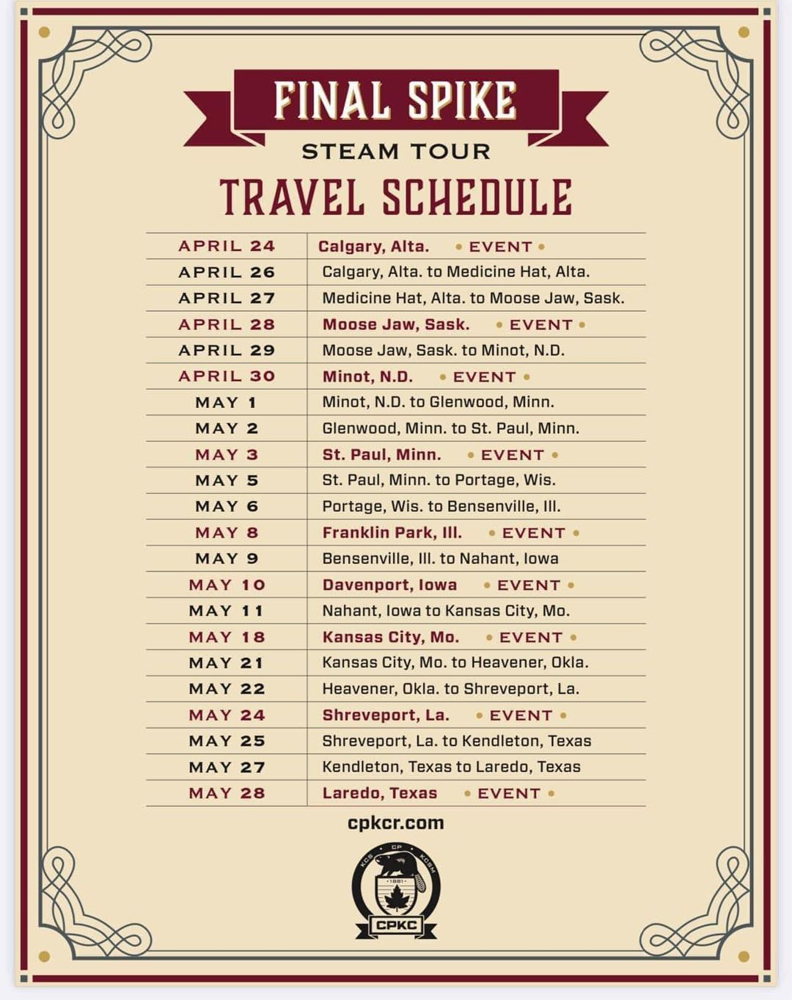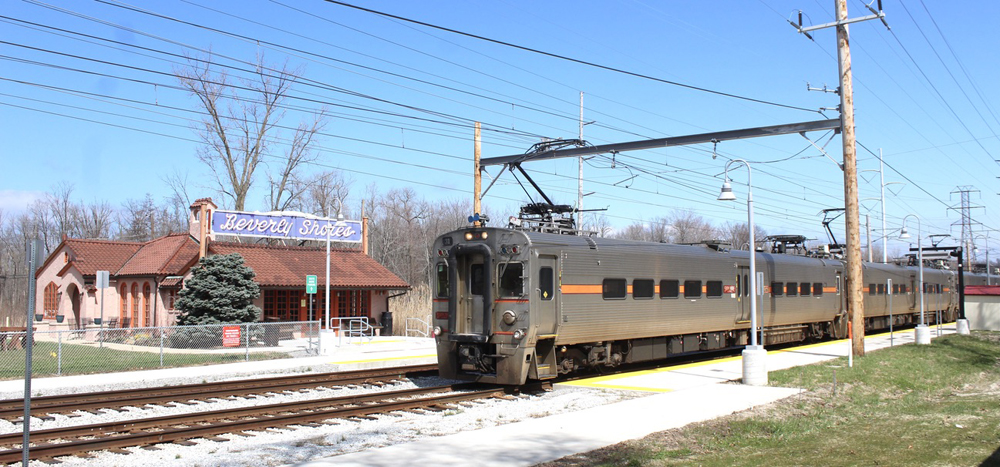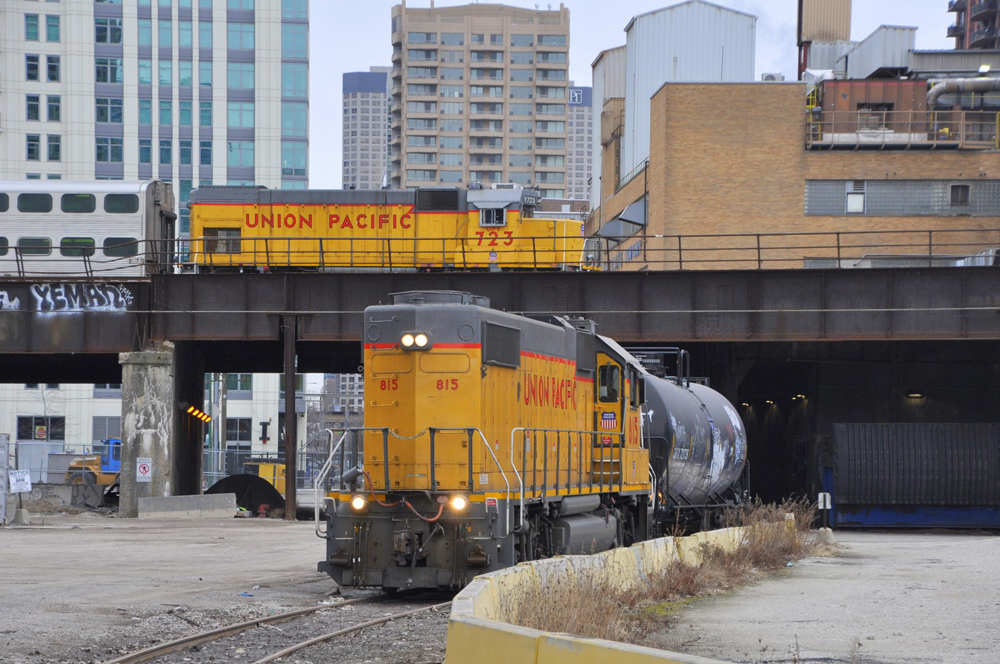Accucraft Trains
33260 Central Ave.
Union City CA 94587
Price: $105
Website: www.accucraft.com
1:20.3 scale, gauge-1 model of Isle of Man Railway guard’s van; gauge-0 wheelsets also supplied; all-plastic construction; metal wheels; chopper-type couplers; maroon-and-cream livery; non-opening doors; no interior detail. Dimensions: Length, 10″; width over duckets, 5 1/4″; height, 5 5/8″. In 1:20.3 scale, this works out to 16’11” x 8’10 1/2″ x 9’6″, respectively
Pros: Well-made model; accurate representation of prototype; good rolling characteristics; excellent paint and graphics; correct scale/gauge combination
Cons: Sparse underbody detail
Accucraft has produced live-steam models of the IMR locomotives and also has an IMR coach. This brake van will complement this other equipment.
Americans are not familiar with brake vans. In Britain, they served to brake trains that carried rolling stock (freight and passenger) without brakes. Inside the van is a large wheel that the guard must turn to apply the brakes to the van, thus adding drag to the rest of the train. Brake vans were common on both standard- and narrow-gauge railroads. The IMR’s dozen E-type brake vans were all constructed between 1873 and 1895. None survive today.
Our review sample is of all-plastic construction. There is no interior detail, which is okay, as you really can’t see into the car anyway. Doors do not open. The van is painted maroon and cream (also available in green and cream), with dark gray, full-length steps, roof, and details. It has the typical British chopper-type couplers. These could be removed and other types fitted, if desired. There is very little underbody detail, although there are holes in the floor, suggestive of a place to mount a lighting fixture. The car is supplied with gauge-1 wheelsets (correct for this scale). A set of gauge-0 wheelsets is also supplied for those running on 32mm track.
An interesting feature of some British rolling stock is the side bump-out at one end. These bump-outs are called duckets. They have small end windows that allow the guard to safely see out along the length of the train without sticking his head outside, which could be dangerous (given close clearances) or just unpleasant during bad weather. The duckets on this vehicle are accurately reproduced.
This is an attractive and well-made car. If you are modeling the IMR, or British practice in general, it could be an eye-catching addition to your rolling stock.





